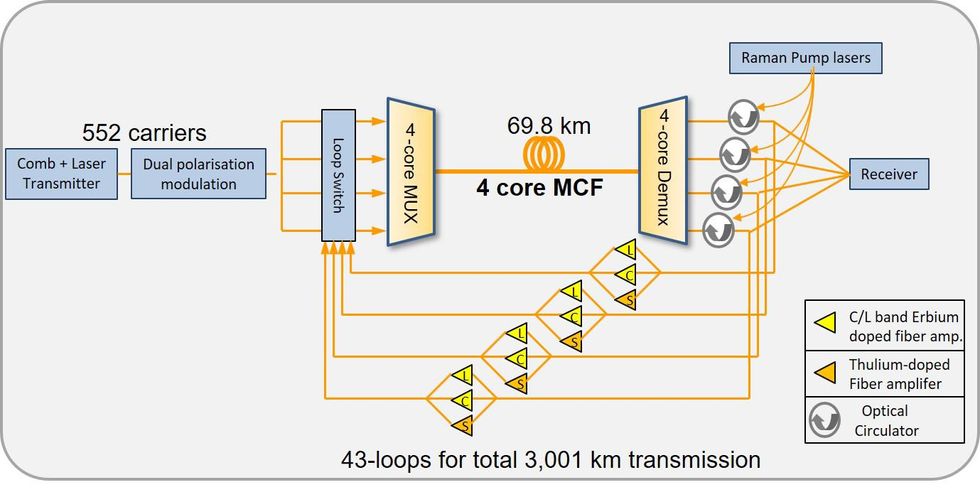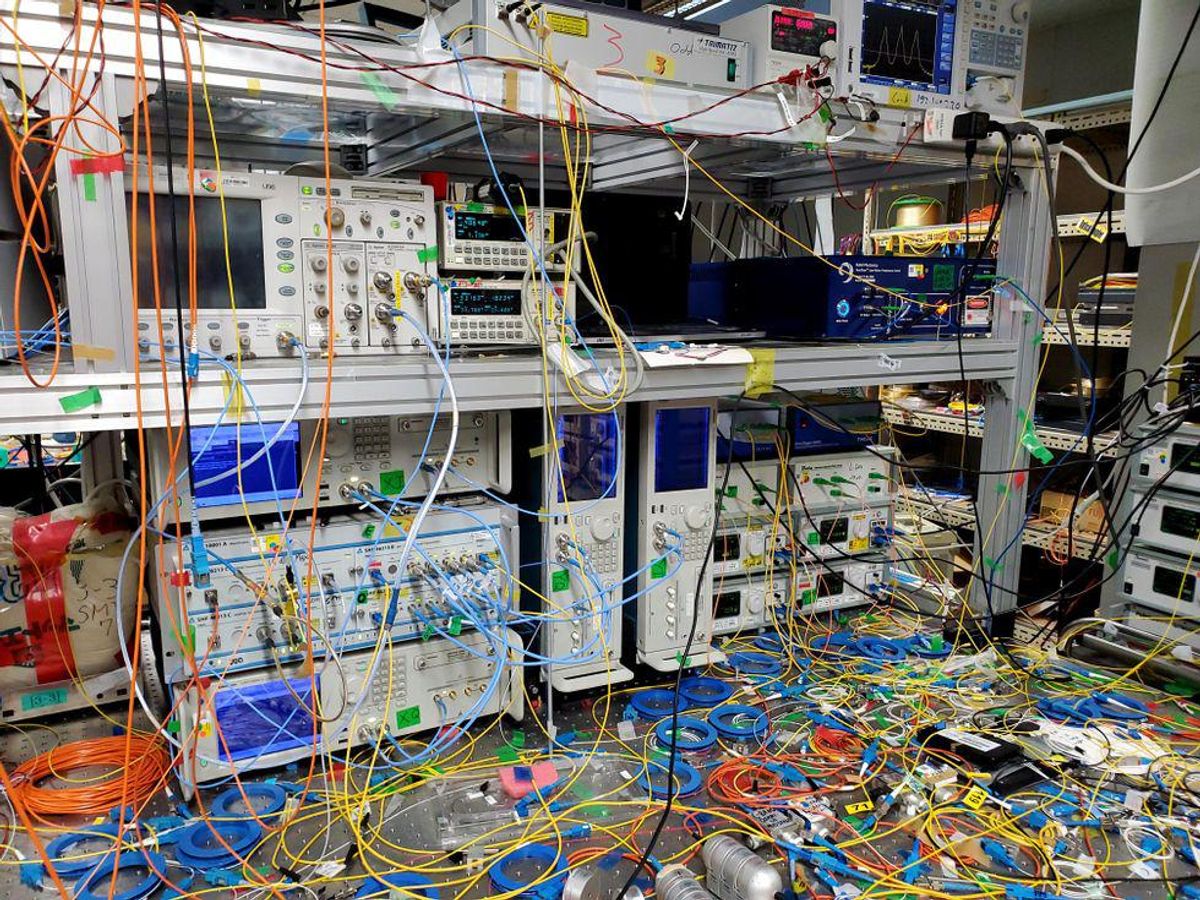Researchers at Japan's National Institute of Information and Communications Technology (NICT) in Tokyo have almost doubled the previous long-haul data transmission speed record of 172 Tb/s established by NICT and others in April 2020. The researchers recently presented their results at the International Conference on Optical Fiber Communications.
In breaking the record, they used a variety of technologies and techniques still to become mainstream: special low-loss 4-core spatial division multiplexing (SDM) fiber employed in research projects, erbium and thulium doped-fiber amplifiers, distributed Raman amplification, and, in addition to utilizing the C-band and L-band transmission wavelengths, they used the S-band wavelength. Until now, S-band usage has been limited to lab tests conducted over just a few tens of kilometers in research projects. But perhaps of most significance is the claimed high transmission quality in the 4-core fiber that maintains the same outer diameter—0.125 mm—of glass cladding used in standard single-mode fiber.
"Because our SDM fiber has the same cladding as standard single-mode fibers, it can be compatible with the same cabling technology currently in use and makes early adoption more likely," says Ben Puttnam, a senior researcher at NICT and leader of the record-breaking project team.
There are other benefits, too, Puttnam notes. "Keeping the same diameter is also important because the mechanical properties and failure probabilities are well understood. Exactly how bending and twisting of larger fibers may affect their properties is not fully known." In the past, he says they have explored some research fibers with cladding diameters almost 3x larger and could achieve transmission rates of over 10 petabits a second. "But these fibers are hard to handle and sometimes snap like dry spaghetti." He adds that larger diameter fibers are also harder to make in long span lengths and the likelihood of splicing errors increase when fibers are joined together.
The experimental setup in the NICT lab comprises a recirculating transmission loop to achieve a distance of 3,001 km. Wavelength division multiplexing (WDM) of 552, 25-GHz spaced channels generated from a comb source and tunable lasers are used to carry the data. And to double the amount of information carried before launching a 120 nm signal into each of the four cores of the fiber, dual-polarization modulators were employed. At 69.8 km intervals along the fiber, loss is compensated for by two kinds of amplifiers—one doped with erbium, the other with thulium—to boost the signals in the C/L bands and in the S bands, respectively. In addition, Raman pump amplifiers provide gain along the transmission fiber, preventing the signal power from decaying excessively. This leads to less noise when the signal is amplified and improves overall performance.

The decoded data rates across the S, C, and L bandwidths are: 102.5 Tb/s (S), 108.7 Tb/s (C) and 107.7 Tb/s (L).
"Now we are working to increase the transmission distance," says Puttnam. "We've already measured channels at a distance of 8,000 kilometers and want to push on to at least 10,000 kilometers by better optimizing the gain flattening." As for transmission rates, "Over short distant spans of 50 to 70 kilometers, I think we could eventually transmit over 1 petabit a second in this fiber."
And once the technology has been optimized, and provided SDM fiber is shown to be practically and economically manufacturable with the same cladding as standard single-mode fiber, what then? Puttnam sees one obvious user for the technology would be operators of trans-ocean submarine cables, where space is at a premium. Another likely customer would be large data centers, where high-density connectors can be crucial and new fibers are routinely added. The potential bandwidth of SDM fibers would also be attractive in terrestrial fiber networks, but the costly business of fiber deployment somewhat complicates the issue.
After deployment, Puttnam expects applications like high-resolution video streaming, online gaming and IoT communications to be some of the applications eating up the additional bandwidth, as will be the advent of 6G in a decade's time.



